Know When a CDP Upgrade Is Overdue
Last updated May 27, 2024Cost savings or lost revenue due to missed opportunities?
Invest in an upgrade or stick with the old solution?
Limited functionality or unlimited possibilities?
All businesses come to the point of asking themselves whether it’s time to upgrade a legacy system. It’s a big decision. Together we’re going to take a look at the common pitfalls of sticking to a legacy customer data system and the benefits of a CDP upgrade.
Legacy System Pitfalls
Business users have a special appreciation for brands. But branded doesn’t always mean better. When a company’s needs begin to outgrow a legacy system’s functionality, it’s time to weigh the cost of sticking to an old solution. You know a CDP upgrade is overdue when these scenarios strike a chord:
Scenario #1: You Are Missing Marketing Targets
Customer journeys today are longer and more complicated thanks to an abundance of digital touchpoints. The resulting landscape of vast customer data demands an equally powerful tool for businesses to make sense of multiple data streams. Legacy systems, such as customer relationship management (CRM) platforms, are designed to manage a handful of traditional channels. They are not built to accommodate the flood of data from e-commerce, mobile apps, IoT, and social media, among other sources.
Without the right context for consumer actions and behavioral cues, marketing initiatives will aim at everything but hit nothing. Messaging will be random rather than relevant. There will be a strong temptation to keep doing whatever worked in the past simply because of a lack of consumer insights. In other words, you can’t even identify what you don’t know about your own customers.
Scenario #2: You Adjust to the System
Legacy systems are not generally known for their adaptability. While they can be enhanced with additional features here and there, their core technology remains incapable of matching the more advanced capabilities of new solutions. CRMs, for example, have improved over the years but still deliver the same core functionalities without expanding into data analysis or identity resolution across channels.
The same is true for data management platforms (DMPs). Even the most complete DMP solutions like hybrid clouds cannot compete with customer data platforms’ (CDP) broad range of applications in the martech stack. A CDP goes beyond targeted advertising, which is where a DMP stops. CDPs also have greater flexibility in collecting and sending data to any kind of adtech or martech partner. Unlike a DMP, which is primarily designed to target new/unknown clients, CDPs also help users differentiate audiences.
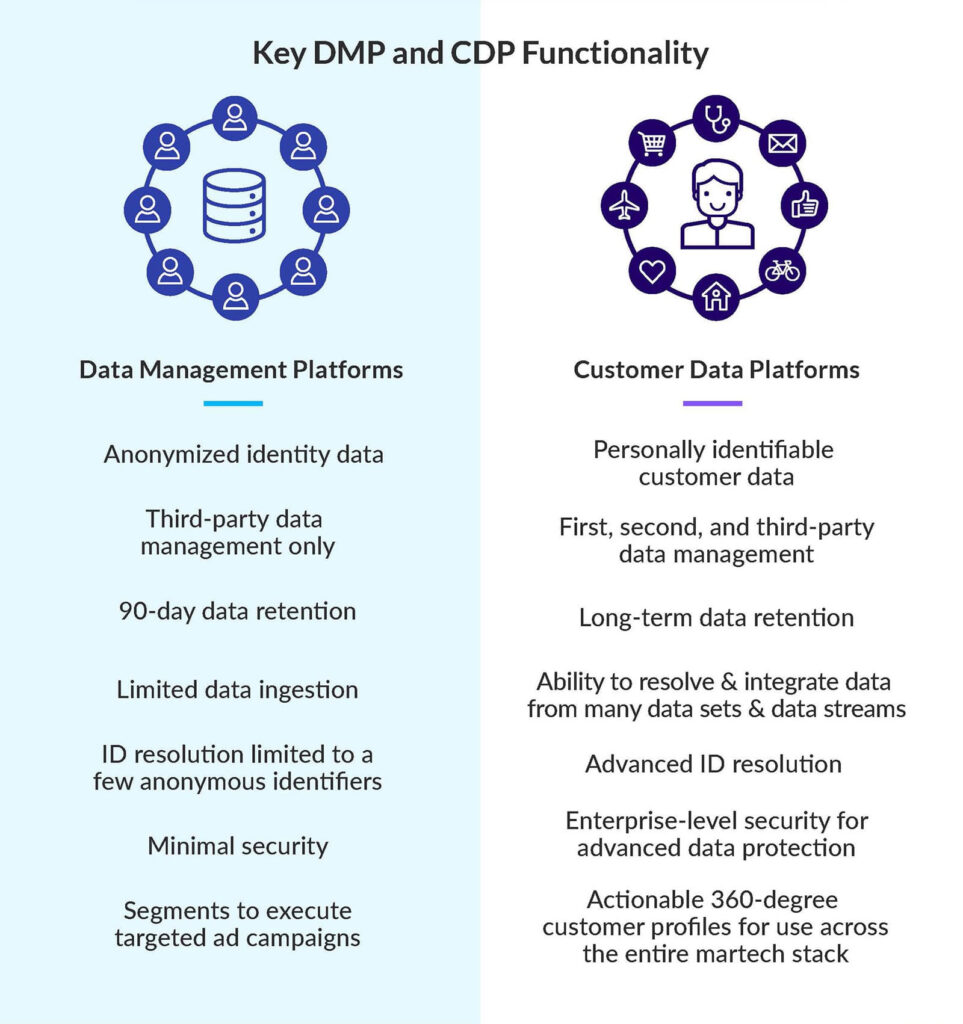
The result of sticking to a legacy system is that human effort compensates for a lack of technological power. While newer solutions like CDPs automate the unification of customer data, teams using CRMs need to source data, develop multiple integrations, and pin them to the right customer profiles. CRM users must also manually enter offline data into the system, something that a DMP or CDP automates.
Another telltale sign that your company is settling for a legacy system is friction between internal teams. According to the recent report “How to Optimize & Future-proof Your Martech Stack,” marketing and IT teams are often at odds regarding martech stack and what they want out of it. Marketing teams’ pain point centers on the slow rollout of new campaigns and initiatives while IT’s top challenge is consolidating various redundant systems. With legacy systems unable to adjust to current needs, departments often take their own separate routes to achieve the same goals instead of working together.
When humans adjust to the system instead of the other way around, it’s time for an upgrade.
Scenario #3: You are Falling Behind the Competition
Brands that rely on legacy systems risk becoming irrelevant to important audience segments and losing out to competitors. For example: A good brand experience attracts younger consumers who enjoy sharing them as social media-worthy moments. But, the experience itself is highly sensitive to social media trends.
Without the groundwork of unified customer profiles and a mapped-out customer journey, consumer insights will not be available to inform decision-making regarding brand experience. These are all a CDP’s strengths, whereas legacy systems such as CRM and DMP can only provide a partial or temporary view of the customer and their journey.
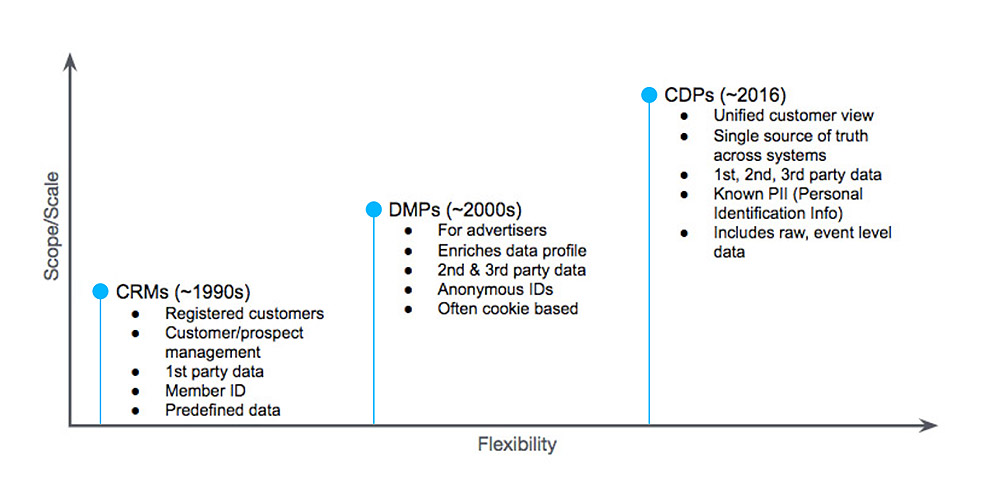
The same goes for personalization: companies that neglect personalized engagement do so at their peril as shoppers are lured to competitors who offer superior services. Without the acumen provided by accurate consumer insights, brands cannot establish themselves as market leaders and will be left to follow competitors’ leads.
Benefits of a CDP Upgrade
Now that we’ve reviewed the pitfalls of sticking to legacy systems, it’s time to look at the benefits of a CDP upgrade. In view of legacy systems’ inadaptability, limited functionality, and weak competitive advantage in the current digital landscape, the alternative is worth considering.
CDPs Supercharge Your Marketing Program
CDPs have become indispensable to marketing, thanks to their ability to unify data from every touchpoint in the customer journey. This is the top martech necessity for surveyed companies, edging out content and conversational marketing.
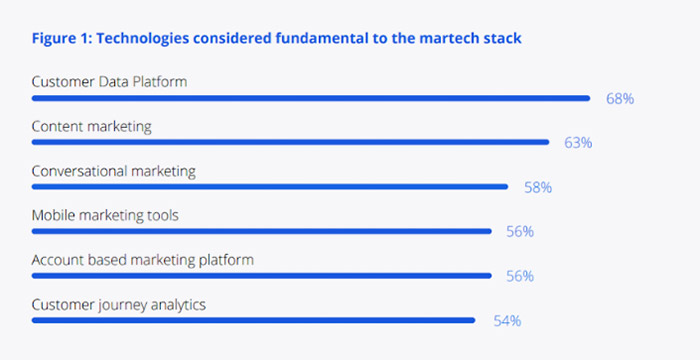
A CDP revolutionizes marketing through:
- Campaign tracking: Instead of waiting for weekly or monthly updates, a CDP immediately informs marketing decisions through feedback loops and actionable insights.
- Audience segmentation and behavioral retargeting: Know your audience through their shopping behaviors: previous purchases, content consumed, and products browsed. Retarget audience segments with new offers based on their purchase habits.
- Fine-tune messaging: Reach the right audience with the right message instead of relying on a generic spiel. A CDP helps personalize the conversation thanks to a unified view of customers and their journey. CDPs can also guide timing and delivery so your brand’s voice stands out amid competitors.
Treasure Data brings customer data to life through centralization, predictive analytics, and intelligent journey orchestration. We use machine learning and data science to scale billions of interactions and personalize individual customer needs across any channel.
Find out what you can do with our platform:
- Collect all available data with consent and centralize all sources in one place. Treasure Data unifies every piece of information for a single customer view (SCV).
- Quickly look up metrics like lifetime value (LTV) and churn to determine the next best action. Treasure Data provides insights for A/B testing so you can optimize campaigns for the best results.
- Activate audience segments with one click across selected channels, or choose our automated journey orchestration solution.
Fact: Treasure Data activates over 20 Billion customer profiles per month.
CDPs Make Your Customer Experience Great
A CDP creates a high degree of personalization for customer experience, no matter the digital journey’s length. This is something that legacy systems can never satisfactorily duplicate. A CDP uses a customer data foundation to harmonize marketing, sales, and support efforts to deliver a cohesive experience across all channels.
A CDP-powered customer experience is characterized by:
- Visibility. With a comprehensive view of the customer journey, you can identify customer positions in the sales funnel and take appropriate steps to guide them to conversion.
- Timing. CDPs use predictive analytics to determine frequency and timing of communication so customers are not overwhelmed by ads and messages.
- Consistency. CDPs help deliver the same experience no matter what channels and touchpoints the customer is engaging with.
One of Treasure Data’s best use cases is personalized customer experience. Using AI, machine learning, and market automation, Treasure Data personalizes individual customers’ journeys on a massive scale. Our intelligent customer data platform helps you:
- Customize experience on channels like brand websites and mobile apps
- Personalize communications: targeted emails, relevant recommendations
- Identify pain points and disruptions for faster resolution
- Increase customer satisfaction by providing support teams with AI-recommended actions
- Level up your customer experience strategy from improvisational to data-driven
MUJI Case Study
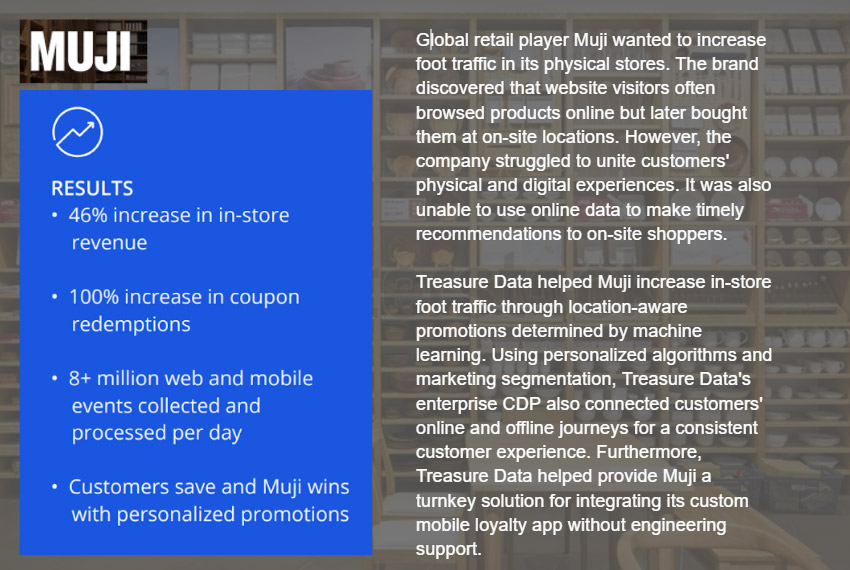
Check out Muji’s full story here.
Fact: Over 400 global enterprise clients trust Treasure Data to personalize their customers’ journeys.
CDPs Arm Your Sales Team With Critical Insights
Every missed opportunity is potential revenue lost to companies. CDPs uncover high-priority audience segments so sales teams won’t miss a chance to engage prospects. Of surveyed organizations, 55% said if they had the means and the team, their top priority would be attracting new customers.
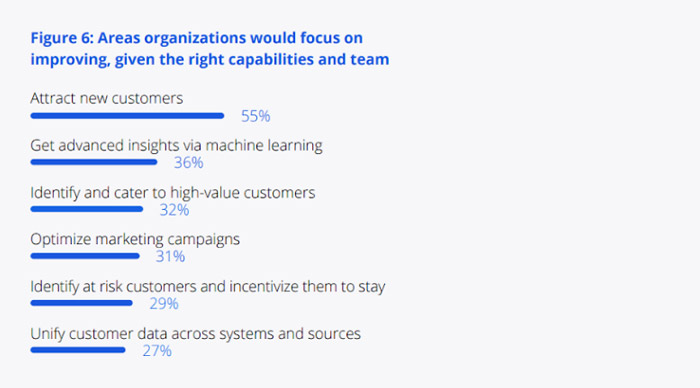
Aside from identifying and engaging prospects, CDPs also improve internal team efficiency and collaboration. CDPs simplify the customer data ecosystem by creating a customer data foundation. This serves as a basis for all lead qualification and post-purchase service interactions for marketing, IT, sales, and support. By centralizing data, teams can collaborate quickly and respond to customer needs in a timely manner.
Treasure Data aims to equip sales teams with critical insights. We help you engage high-priority leads with account-specific insights and AI recommendations. Our data-driven personalization strategy can help sales teams:
- Identify audiences with a high inclination to purchase
- Prioritize leads through predictive scoring and customer lifetime value
- Engage priority prospects with the right experience
- Close deals faster with up-to-date customer insights
- Improve closed-won rates
- Cut down customer acquisition cost
Treasure Data is built for scale and manages customer data for global sales teams. Watch this video to see how we can help you unlock the power of customer data and drive profitability.
Fact: Treasure Data’s CDP has a 802% ROI, validated by Forrester Consulting.
Using a CDP is the only effective marketing solution in today’s digital landscape. Sticking with legacy systems will cause brands to miss marketing targets and fall behind the competition. Solutions that do not offer broad functionality will force users to adjust to outdated technology instead of the other way around.
Embracing the future starts with a CDP upgrade that supercharges marketing programs, creates a great customer experience, and arms sales teams with critical insights to drive revenue. A CDP upgrade puts human decision-makers in control and provides what they need when they need it.
Embrace the Future With Treasure Data’s CDP
Treasure Data future-proofs your martech stack with broad functionalities that transform marketing, sales, and support, among others. Our enterprise-grade CDP resolves legacy system pitfalls such as siloed data, disconnected touchpoints, incomplete customer views, and many more. We centralize your customer data into a single source of truth with unlimited visibility and storage capacity.
Treasure Data creates a unified customer view (UCV) and uses AI and machine learning to analyze and predict customer behavior. We help you achieve targeted personalization at scale, making the most of your marketing strategy and budget.
Worried about integration? No problem. Choose from 200+ connectors that work with any existing technology stack. We also designed our platform with you in mind—Treasure Data comes with a simple graphical user interface (GUI) so it’s intuitive for various members of your team.
Get your CDP upgrade here or consult an expert today. Treasure Data can help you shape customer-centricity to power exceptional experiences and build trust. Request a demo, call us at +1.866.899.5386 or contact us for more information.